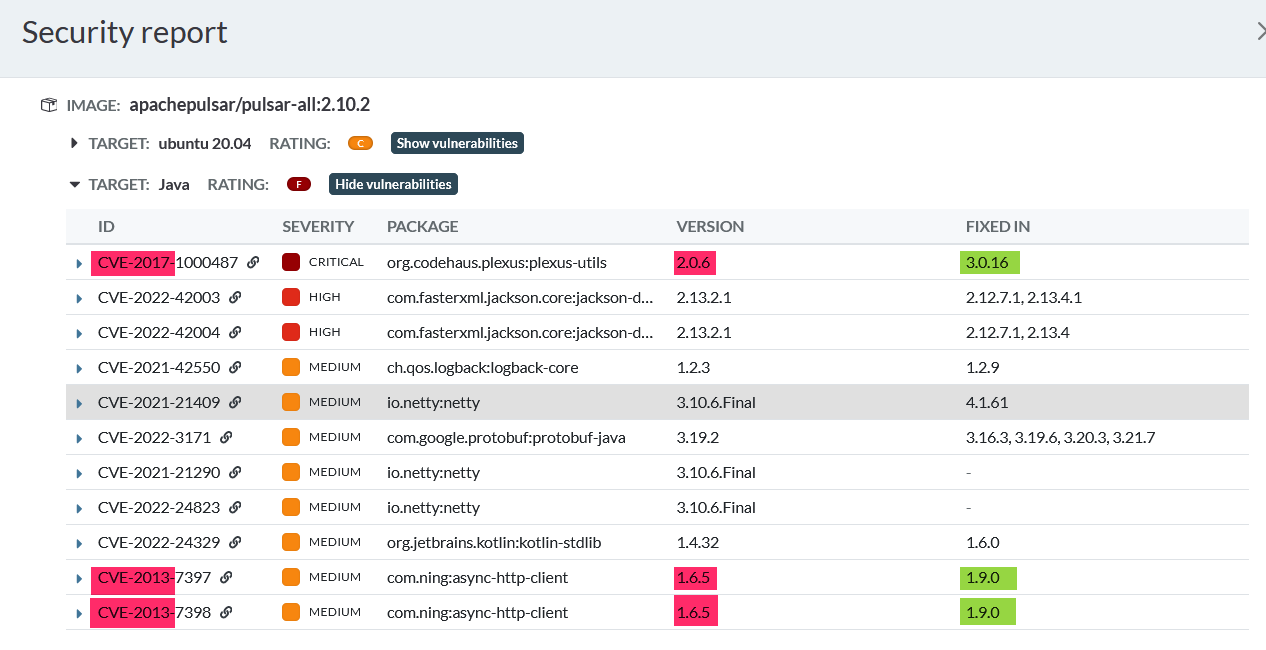Replies: 14 comments
-
Beta Was this translation helpful? Give feedback.
-
Beta Was this translation helpful? Give feedback.
-
|
before writing this issue, I had a conversation with Apache Security team,
|
Beta Was this translation helpful? Give feedback.
-
|
@hpvd thanks for opening this issue. I think that your point is really valid. I think that it is appropriate to start this discussion on the mailing lists (dev@pulsar.apache.org), as that's the place we run broad discussions. Regarding this issue: Regarding the core Pulsar package we try to keep all the dependencies as up-to-date as possible and to cut releases as soon as problems are discovered and reported to the PMC. |
Beta Was this translation helpful? Give feedback.
-
|
@eolivelli thanks for your comment. Just opened an issue also in the repository of pulsars helm chart: |
Beta Was this translation helpful? Give feedback.
-
|
would be very interesting to see, how an updated helm chart with
would/will perform in the same scan. |
Beta Was this translation helpful? Give feedback.
-
|
just as background info, the security scanner used by artifacthub, providing results shown above For details, see: and trivy |
Beta Was this translation helpful? Give feedback.
-
|
there is also an easy to use github action for scanning with trivy
=> Maybe this is interesting to integrate this directly into the CI pipeline... |
Beta Was this translation helpful? Give feedback.
-
|
number of vulnerabilities is still growing: Today images in Pulsars helm chart crosses the 1k: Good to know there was hard work done during last week and there will be soon a major update Details and voting: https://lists.apache.org/thread/b02r3605jvmom23p1ccjbzsfwrq5tkjv |
Beta Was this translation helpful? Give feedback.
-
|
new Helm chart v 3.0 on the base of Pulsar 2.10.2 was just released: |
Beta Was this translation helpful? Give feedback.
-
|
Latest security analysis show
|
Beta Was this translation helpful? Give feedback.
-
|
Beta Was this translation helpful? Give feedback.
-
edit: just opened a separate issue for this: #18338 |
Beta Was this translation helpful? Give feedback.
-
|
The issue had no activity for 30 days, mark with Stale label. |
Beta Was this translation helpful? Give feedback.





Uh oh!
There was an error while loading. Please reload this page.
Uh oh!
There was an error while loading. Please reload this page.
-
Search before asking
Motivation
When people/companies evaluate open source software to rely and build on
they more and more
do not only look on its functional value alone
but also on topics like
One thing often done, is a quick automated analysis
This quick analysis gives a first taste/impression
on two things:
Often you do not even have to do the analysis on your own,
but you can directly find analysis results using web search.
When doing this for pulsar,
you easily find e.g. on artifacthub.io
an analysis of the latest official helm chart for Apache Pulsar
https://github.com/apache/pulsar-helm-chart
the summarized result of security analysis shows:
In detail:
see source https://artifacthub.io/packages/helm/apache/pulsar?modal=security-report
Of course, this is only a first rough impression given by this analysis.
And the chart does not contain the very latest version of pulsar (even so, it's the latetst official helm chart)
When looking into every detail of the reported numbers, you can of course argue why not every counted vulnerabilities is a disaster...
=> But how can you easily argue to anyone having seen this fast result
Solution
or
a way/plan to find a solution to make it possible to say in the near future:
Alternatives
No response
Anything else?
No response
Are you willing to submit a PR?
Beta Was this translation helpful? Give feedback.
All reactions